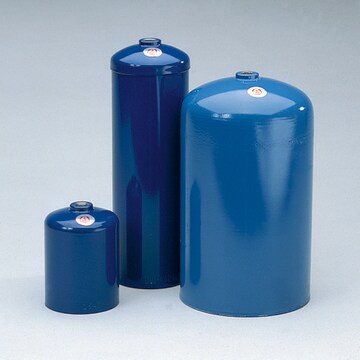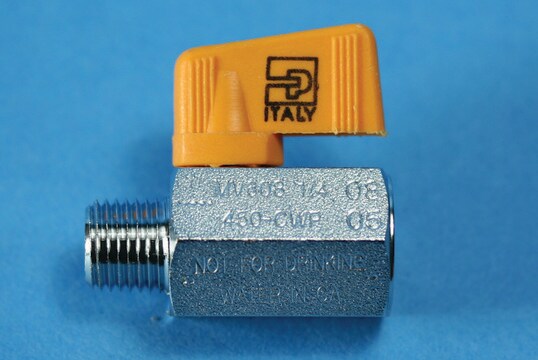257222
Triméthylaluminium
97%
Synonyme(s) :
Aluminium triméthyl, TMA
About This Item
Produits recommandés
Pression de vapeur
69.3 mmHg ( 60 °C)
Niveau de qualité
Description
heat of vaporization: ~41.9 kJ/mol (dimer)
Pureté
97%
Forme
liquid
Pertinence de la réaction
core: aluminum
Point d'ébullition
125-126 °C (lit.)
127 °C/760 mmHg
20 °C/8 mmHg
56 °C/50 mmHg
Pf
15 °C (lit.)
Densité
0.752 g/mL at 25 °C (lit.)
Chaîne SMILES
C[Al](C)C
InChI
1S/3CH3.Al/h3*1H3;
Clé InChI
JLTRXTDYQLMHGR-UHFFFAOYSA-N
Vous recherchez des produits similaires ? Visite Guide de comparaison des produits
Description générale
Application
- As a growth initiator to synthesize self-assembled aluminum nanoparticles via atomic layer deposition.
- As a precursor to synthesize aluminum-doped ZnO thin films(AZO) for electron transport layer of perovskite solar cells. TMA enhances electrical conductivity and thermal stability of perovskite layers.
- To fabricate Al2O3-coated Si-alloy anodes for Li-ion batteries. This coating helps to suppress the volume expansion of Si and improves cell stability.
- To fabricate Al2O3-coated graphite electrode with superior anti-self-discharging behavior (260 h) with long stability (900 cycles), for Al-ion battery.
Conditionnement
Compatible with the following:
- Aldrich® Sure/Pac™ station for liquefied gases Z566446
- PTFE Sealing tape Z104388 or Z221880
- Straight septum-inlet adapter Z118141 with septa Z565687 or Z565695
Autres remarques
Informations légales
Adaptateur d'entrée à septum
En option
Souvent commandé avec ce produit
Mention d'avertissement
Danger
Mentions de danger
Classification des risques
Eye Dam. 1 - Pyr. Liq. 1 - Skin Corr. 1B - Water-react 1
Risques supp
Code de la classe de stockage
4.2 - Pyrophoric and self-heating hazardous materials
Classe de danger pour l'eau (WGK)
nwg
Point d'éclair (°F)
No data available
Point d'éclair (°C)
No data available
Équipement de protection individuelle
Faceshields, Gloves, Goggles, type ABEK (EN14387) respirator filter
Faites votre choix parmi les versions les plus récentes :
Déjà en possession de ce produit ?
Retrouvez la documentation relative aux produits que vous avez récemment achetés dans la Bibliothèque de documents.
Les clients ont également consulté
Articles
Some of the most innovative uses for atomic layer deposition (ALD) include synthesis of novel structures, area-selective deposition of materials, low-temperature ALD deposition, and temperature-sensitive subtrates.
As the electronic industry continues to move towards smaller and smaller devices, researchers must continually strive for technologies to deposit electronic materials with precision at ever-smaller scales. This trend has lead to a variety of techniques used in the microelectronics industry to layer materials with precision thicknesses, sometimes down to even the atomic level.
Since the demonstration of the first practical solar cell 60 years ago, research on novel materials, improved solar cell design and structure, and innovative manufacturing processes have all contributed to a continuous increase in the efficiency of photovoltaic (PV) devices.
The properties of many devices are limited by the intrinsic properties of the materials that compose them.
Notre équipe de scientifiques dispose d'une expérience dans tous les secteurs de la recherche, notamment en sciences de la vie, science des matériaux, synthèse chimique, chromatographie, analyse et dans de nombreux autres domaines..
Contacter notre Service technique








